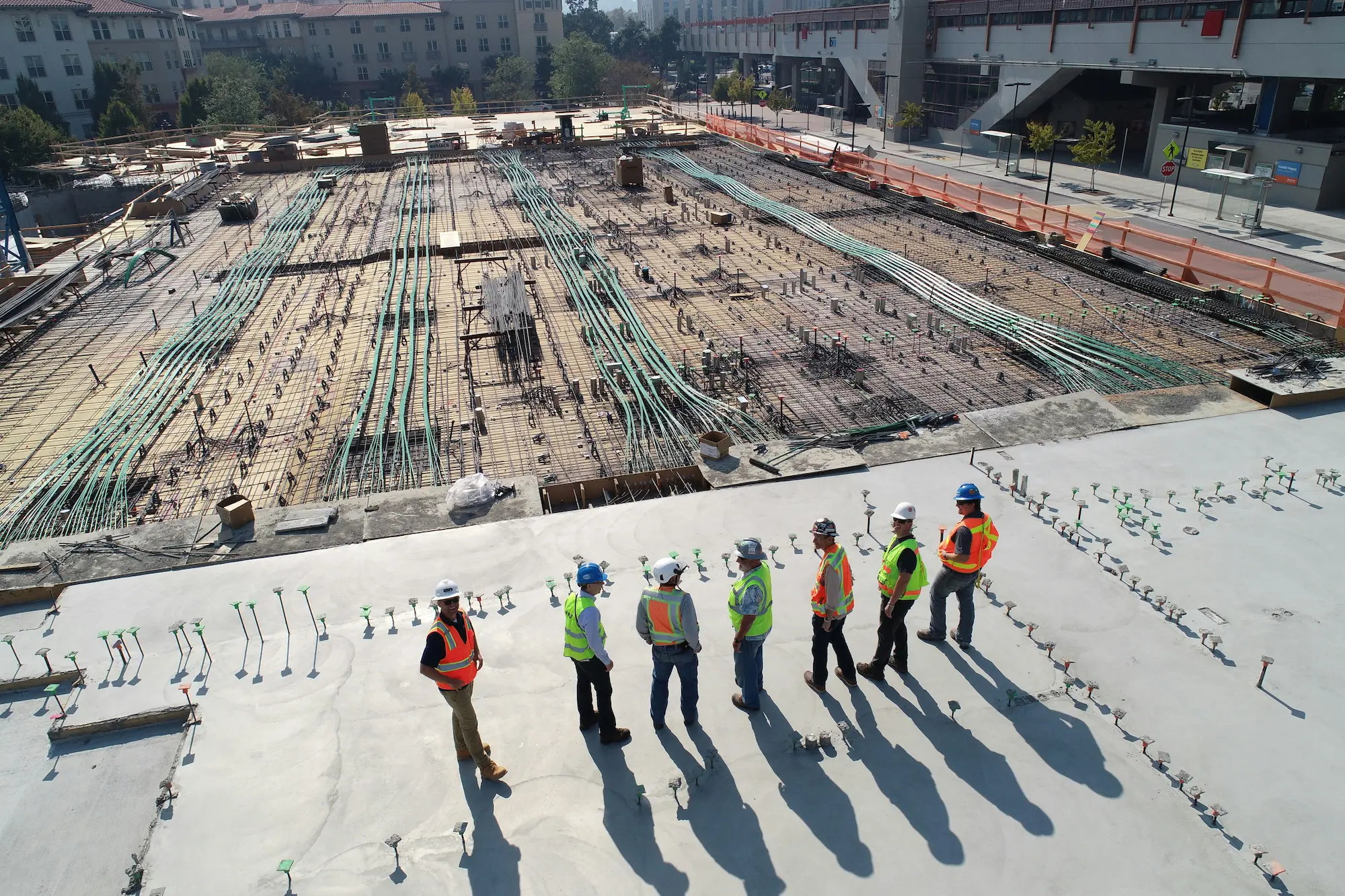Impact of Regulatory Changes on Sydney’s Construction Sector

Sydney’s skyline is a testament to its vibrant construction sector, a critical engine driving the city’s economic growth. This sector not only shapes the physical landscape but also supports numerous jobs, making it a key player in the urban development narrative. As Sydney continues to expand, the construction industry faces the dual challenge of meeting growing infrastructure demands while adhering to increasingly stringent regulatory standards.
The construction landscape in Sydney is diverse, encompassing everything from residential buildings to commercial hubs and public infrastructures. This diversity not only fuels economic activity but also invites a complex array of regulatory oversight aimed at ensuring safety, sustainability, and quality in building practices. Understanding this backdrop is crucial for appreciating the profound impact of recent regulatory changes on the sector.
These changes, driven by safety lapses and environmental concerns, are reshaping how construction projects are planned, executed, and delivered. They reflect a broader trend towards sustainable development and are pivotal in setting new industry benchmarks. Let’s delve deeper into these regulatory updates and their broader implications.
Specific Regulatory Changes and Their Implications
In recent years, Sydney’s construction sector has navigated through a series of significant regulatory updates. Key among these is the overhaul of the Building Code of Australia, which introduced stringent requirements on construction materials and practices. These changes were primarily motivated by the urgent need to enhance building safety and environmental sustainability.
The new safety standards and environmental compliance requirements are particularly noteworthy. They aim to mitigate risks associated with construction activities and align with global sustainability trends. For instance, the emphasis on reducing carbon footprints and enhancing energy efficiency has become more pronounced, reflecting a shift towards more responsible construction practices.
These regulatory adjustments were not arbitrary but responses to specific incidents that highlighted potential risks in the sector. By understanding these motivations, construction firms can better appreciate the importance of compliance and the underlying goals of these regulations—enhancing safety and sustainability.
Economic Impact of Regulatory Changes
The financial implications of these regulatory changes are significant, particularly in terms of compliance costs. Construction firms now face higher expenses as they invest in compliant materials and technologies. These costs are often passed on to clients, affecting the overall economics of construction projects.
For smaller firms, these changes are particularly challenging. Unlike their larger counterparts, small to medium-sized enterprises struggle to absorb the increased costs, which can impact their competitiveness and financial stability. This disparity highlights the need for targeted support mechanisms that can help smaller firms navigate the regulatory landscape without compromising their operational viability.
However, it’s not all challenging. These regulations also drive innovation within the sector, encouraging firms to adopt new technologies and practices that can lead to long-term savings and operational efficiencies. Thus, while the initial adjustment period is costly, the long-term benefits of compliance can outweigh these early investments.
Technological Adaptations in Response to Regulations
To align with new regulations, many construction companies in Sydney are turning to innovative technologies. Compliance tracking software, for instance, has become indispensable for many firms. This technology enables companies to monitor their compliance in real-time, ensuring that every aspect of their operations aligns with current regulations.
Moreover, the adoption of advanced building materials that meet stricter regulatory standards is on the rise. These materials are not only safer and more durable but also environmentally friendly, contributing to the sustainability goals of the new regulations. Their use is becoming a critical consideration in project planning, influencing decisions from design to construction.
Sustainable construction techniques, such as green building practices, are also gaining traction. These methods help companies meet environmental regulations and appeal to a growing segment of clients interested in sustainable development. By investing in these technologies, construction firms not only comply with regulations but also position themselves as leaders in sustainable construction.

Compliance Strategies with Natalie Cooper
Navigating the evolving regulatory landscape requires more than just technical know-how; it demands a solid understanding of construction law. Natalie Cooper, a seasoned legal expert in construction law, offers invaluable advice to firms grappling with these changes. Her expertise helps companies interpret complex regulations and integrate compliance into their business strategies effectively.
“Understanding the legal implications of regulatory changes is crucial for maintaining project timelines and budgets,” explains Cooper. Her approach involves a proactive review of upcoming regulations, allowing firms to anticipate changes and adapt their practices accordingly. This forward-thinking strategy is essential for minimising the risk of non-compliance, which can lead to costly delays and penalties.
Cooper’s role extends beyond mere compliance. She assists firms in leveraging legal insights for strategic advantage, ensuring that they not only meet regulatory requirements but also enhance their operational efficiency and market competitiveness. Her guidance is pivotal for firms aiming to navigate the regulatory environment successfully.
Government Initiatives and Support with Benjamin Hart
The government plays a crucial role in supporting the construction sector’s adaptation to new regulations. Benjamin Hart, a policy advisor for the New South Wales government, outlines several initiatives designed to facilitate this transition. These include informational resources, training programs, and financial grants, which are instrumental in helping firms understand and implement the new standards.
Hart emphasises the collaborative nature of these initiatives: “By working together with the construction industry, we can ensure that regulatory changes are implemented effectively and sustainably.” This partnership approach helps align government policies with industry capabilities, ensuring that regulations promote innovation and sustainability without stifling growth.
These government-led initiatives not only support compliance but also encourage innovation within the sector. By providing resources and support, the government helps firms invest in new technologies and practices that align with regulatory changes, fostering a more innovative and sustainable construction industry.
Case Study: Building Certifiers Pty Ltd
Building Certifiers Pty Ltd, under the leadership of Kyrillos Ghaly, exemplifies how a company can navigate regulatory changes effectively. Ghaly, with his extensive background in building surveying, has positioned his company at the forefront of compliance and excellence. His proactive approach to certification ensures that projects not only meet regulatory standards but also exceed client expectations.
Under Ghaly’s direction, the company has successfully managed several high-profile projects, adapting to new building codes and regulations without compromising on quality or efficiency. His hands-on approach to project management and commitment to quality have become benchmarks within the industry, inspiring others to elevate their standards.
The challenges faced by Building Certifiers Pty Ltd highlight the broader implications of regulatory changes on the construction certification industry. However, through strategic planning and a commitment to excellence, Ghaly and his team have turned these challenges into opportunities for growth and improvement, setting a stellar example for others in the industry.
Stakeholder Engagement and Collaboration
Effective implementation of new construction regulations requires active engagement and collaboration among all stakeholders. In Sydney, construction companies, certifiers, and government bodies are increasingly working together to ensure smooth transitions to new standards. This collaborative effort is facilitated through workshops, seminars, and joint committees, which provide platforms for dialogue and cooperation.
These forums are not just about addressing compliance challenges; they also serve as incubators for innovation. By sharing insights and best practices, stakeholders can collectively develop strategies that enhance efficiency and sustainability in construction practices. This collaborative approach not only helps in achieving compliance but also drives the industry forward, fostering a culture of continuous improvement and innovation.
Future Outlook and Preparations for Upcoming Changes
Looking ahead, the construction industry in Sydney must remain vigilant and adaptable to keep pace with ongoing regulatory changes. The focus on sustainability and safety is likely to intensify, presenting both challenges and opportunities. Staying informed through industry associations and continuous learning is crucial for firms aiming to stay ahead of the curve.
Anticipating future changes can be daunting, but proactive preparation is key. Investing in research and development can equip companies with the knowledge and tools needed to meet upcoming standards. Moreover, engaging with legal and industry experts can provide insights that refine compliance strategies and enhance operational efficiencies.
The future of Sydney’s construction sector is promising, with continued investments and developments driving growth. However, the ability of companies to adapt to regulatory changes will be a critical determinant of their success. Strategic planning and proactive adaptation are essential for navigating the evolving landscape of construction regulations.
Actionable Advice
Reflecting on the insights shared in this article, it’s evident that the regulatory landscape in Sydney’s construction sector is complex but navigable. Staying informed and proactive is essential for anyone involved in this dynamic industry. Engaging with experts like Natalie Cooper for legal advice and leveraging government resources as outlined by Benjamin Hart can provide significant advantages.
For those looking to stay ahead, attending upcoming seminars and joining professional groups are excellent ways to keep abreast of changes and network with peers. Consulting with seasoned professionals like Kyrillos Ghaly can also offer deeper insights and tailored strategies to meet specific business needs.
In conclusion, while regulatory changes present challenges, they also offer opportunities for growth and improvement. By embracing these changes and preparing strategically, Sydney’s construction sector can continue to thrive, contributing to the city’s vibrant growth and development.


